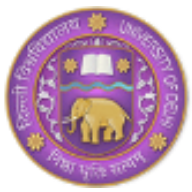Jamia Hamdard University is a public university in Delhi, India, established in 1989. It was founded by Dr. Hakeem Abdul Hameed, the founder of Hamdard Dawakhana, to promote education, culture and national integration. Here are some key facts about Jamia Hamdard University:
Historical Background:
Jamia Hamdard was originally established as an educational institution focused on Unani medicine (a traditional Islamic medicine).
In 1989, it was recognized as a central university by the Indian government, marking its establishment as a comprehensive higher education institution.
Academic Reputation:
Jamia Hamdard has an excellent reputation in the fields of medicine, pharmacy, nursing, biotechnology and management.
It is one of the few universities in India that offers Unani medical degrees and is particularly well-known for pharmacy education.
The university is also rated as an A-level institution, which means that it meets high standards in teaching quality, infrastructure and research output.
Academic Structure:
Jamia Hamdard has several colleges offering a wide range of courses from undergraduate to postdoctoral.
The main colleges include:
Faculty of Medicine
Faculty of Pharmacy
Faculty of Life Sciences
Faculty of Management and Computer Applications
Faculty of Nursing and Midwifery
Faculty of Islamic Studies and Social Sciences
Research and Facilities:
The university has excellent research facilities to support research in the fields of life sciences, drug development, public health, etc.
Jamia Hamdard's research focuses on the combination of traditional medicine and modern science, as well as improving public health.
Internationalization:
The university attracts many international students, especially from Asia, Africa and the Middle East.
Jamia Hamdard has established partnerships with universities and research institutions in many countries, promoting academic exchanges and international cooperation.
Campus Life:
The campus has complete facilities, including libraries, laboratories, sports facilities, accommodation and catering services.
The university encourages students to participate in cultural, social and sports activities to promote holistic education.
Admission and Application:
Admission is usually based on academic performance and entrance examinations.
Different courses may have different admission criteria, and some courses may also require an interview.
International students need to meet additional application requirements, such as proof of English proficiency.
Tuition Fees:
As a public university, Jamia Hamdard's tuition fees are relatively low, especially for Indian citizens.
Fees for international students will vary, but in general, they are still reasonable compared to other private universities.
Graduate Prospects:
Graduates of the university have good employment prospects in industries such as healthcare, pharmaceuticals, biotechnology, and management.
Jamia Hamdard's Career Development Center provides students with career counseling services, internship opportunities, and campus recruitment events.
-

Anna University
-

Jamia Millia Islamia
-

Shoolini University/Shoolini University of Biotechnology and Management Sciences
-

Manipal University/ Manipal Academy of Higher Education
-

VIT University/Vellore Institute of Technology
-

Jawaharlal Nehru University
-

Indian Institute of Science
-

Banaras Hindu University
-

Savitribai Phule Pune University/University of Pune
-

University of Delhi
-

Mesoamerican University
-

Istmo University
-

Mariano Galvez University of Guatemala
-

Regional University of Guatemala
-

Galileo University
-

Francisco Marroquín University
-

Rafael Landívar University
-

University of the Valley of Guatemala
-

University of San Carlos of Guatemala
-

Technological Institute of Tlaxcala Plateau
-

Golfo University
-

Technological University of South Sonora
-

Technological University of Huejotzingo
-

Tizimín Institute of Technology
-

Chilpancingo Institute of Technology

